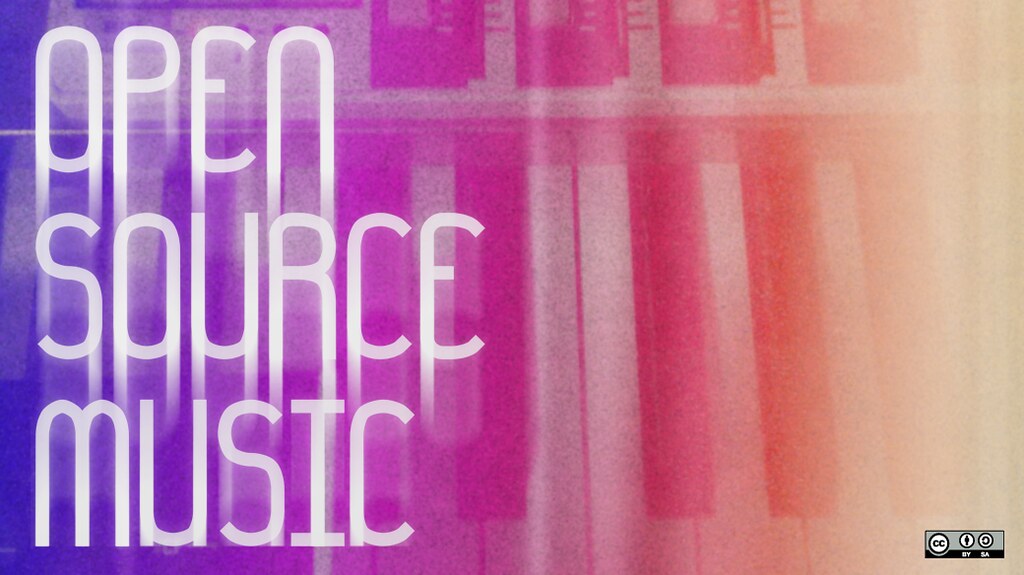When it comes to mastering music production, YouTube is an invaluable resource. Countless tutorials cater to every skill level, from beginner to expert. However, with so much information available, it can be difficult to know where to start. In this article, we’ll walk you through everything you need to know about music production on YouTube, from the best channels to follow to the essential equipment you’ll need. Whether you’re looking to create your own music or simply improve your production skills, we’ve got you covered. So let’s dive in and discover how YouTube can help you become a music production pro.
Table of Contents

Music Production Software – Your Digital Audio Workstation (DAW)
If you want to create music, you need music production software, also known as a digital audio workstation (DAW). This computer program is used to record, edit, and mix audio. It is an essential tool for any music producer, and there are many different types of music production software available in the market, each with its own strengths and weaknesses.
Why Do I Need Music Production Software?
Music production software is the backbone of modern music creation. It allows producers to manipulate sounds in almost any way imaginable, from adding effects to changing the pitch and tempo of a track. With music production software, you can create a wide variety of music, from electronic dance music to singer-songwriter ballads.
Types of Music Production Software
There are many different types of music production software on the market, each with its own unique features and benefits. Some of the most popular music production software includes:
- Ableton Live
- FL Studio
- Logic Pro X
- Pro Tools
- Cubase
- Studio One
These software programs are designed to help you create and produce music, no matter what genre you are interested in. They offer a range of features, including recording, editing, mixing, mastering, and more.
How to Choose the Right Music Production Software
Choosing the right music production software can be a daunting task, but it’s important to find one that suits your needs and budget. Consider the following factors when choosing music production software:
- Your budget
- The type of music you want to produce
- The features you need
- Your level of experience with music production software
By taking these factors into consideration, you can find the music production software that is right for you.

Recording Techniques for Music Production
Recording techniques are an integral component of music production. They can help capture high-quality audio that can be edited and mixed to create a polished track. In music production, there are many different recording techniques that can be used based on the desired outcome and type of music. Each technique has its own strengths and weaknesses which can bring out a specific sonic quality. Here are some of the most popular recording techniques that are used in music production:
Close Miking
Close miking is a recording technique that involves placing a microphone close to the sound source. This technique is ideal for producing a clear and intimate sound. It is commonly used to record vocals or individual instruments such as guitar, drums, or piano.
Room Miking
Room miking is a technique that involves placing a microphone at a distance from the sound source to capture the sound of the entire room or space. This technique is often used to record live performances or to capture the natural reverb of a room.
Overhead Miking
Overhead miking is a technique that involves placing microphones above the sound source. This technique is commonly used to record drums and cymbals. Overhead miking can help capture a wider stereo image and produce a more natural sound.
Ambience Miking
Ambience miking is a technique that involves placing microphones in the room to capture the natural sound of the environment. This technique is often used to create a sense of space and depth in the recording.
Panning
Panning is a technique that involves placing sounds in different positions in the stereo field. This technique can be used to create a sense of movement and space in the recording. It can also help separate different sounds and instruments to make them easily distinguishable.
By using different recording techniques, music producers can create a unique and polished sound that sets their music apart.

Mixing and Mastering Techniques for Music Production
Mixing and mastering are critical stages of music production that can make a significant difference in the overall sound quality of a track. Mixing involves integrating all individual tracks into a final stereo mix, while mastering prepares that mix for distribution.
Popular Mixing and Mastering Techniques
Here are some popular mixing and mastering techniques to consider:
EQ
EQ (Equalization) is a powerful tool that can be used to adjust the frequency balance of a track. It can be used to boost or cut specific frequencies in the track so that each instrument and vocal sits well in the mix.
Compression
Compression can help control the dynamic range of a track by reducing the difference between the loudest and quietest parts of a track. It can make softer sounds louder, and louder sounds softer, making the overall mix sound more balanced.
Reverb
Reverb can add a sense of space and depth to the track by simulating the sound of a room or environment. It can also be used to smooth out the harshness of a track and make it sound more natural.
Delay
Delay can be used to create an echo effect, adding depth and ambiance to the track. It can also be used to create rhythmic patterns, making the track sound more interesting.
Limiting
Limiting is a type of dynamic range compression that can be used to increase the overall volume of the track. It can be used to make the track sound louder without causing distortion.
By using these mixing and mastering techniques, you can shape the sound of your track and make it sound more polished and professional. Remember to experiment with different settings and techniques to find the best sound for your music.
Digital Audio Workstations (DAWs) for Music Production
A digital audio workstation (DAW) is computer software used for music production. DAWs offer a range of tools and features for creating, recording, editing, mixing, and mastering audio tracks. These tools allow music producers to create professional-quality music right from their computers.
There are many different DAWs available in the market, and each has its own unique set of features and benefits. Here are some of the most popular DAWs used in music production:
1. Ableton Live
Ableton Live is a DAW that is often used for live performance and electronic music production. It has a unique session view which allows producers to create and manipulate loops and samples in real-time. Ableton Live is also known for its powerful MIDI capabilities, making it a great choice for producers who use MIDI controllers.
2. FL Studio
FL Studio, formerly known as FruityLoops, is a DAW that is popular among hip-hop and electronic music producers. It has a user-friendly interface and comes with a wide range of virtual instruments and plugins. FL Studio also has a step sequencer that allows producers to create rhythmic patterns with ease.
3. Logic Pro X
Logic Pro X is a DAW developed by Apple and is popular among singer-songwriters and producers who work with acoustic instruments. It comes with a large library of virtual instruments, plugins, and effects, making it a great choice for producers who want a wide range of sounds to work with. Logic Pro X also offers powerful mixing and mastering tools.
4. Pro Tools
Pro Tools is a professional-level DAW used in many recording studios around the world. It offers advanced tools for recording, editing, and mixing audio tracks. Pro Tools is often used for film and television soundtracks as well as music production.
5. Cubase
Cubase is a DAW developed by Steinberg and is popular among music producers and composers. It offers advanced features for composing and arranging music, as well as powerful mixing and mastering tools. Cubase also comes with a large library of virtual instruments and plugins.
6. Studio One
Studio One is a DAW developed by PreSonus and is known for its user-friendly interface. It offers a range of tools for recording, editing, and mixing audio tracks. Studio One also comes with a large library of virtual instruments and effects.
Each of these DAWs has its own unique workflow and set of features, so it’s important to choose the one that best suits your needs and creative style.

Top YouTube Channels for Learning Music Production
If you’re looking to learn music production on YouTube, there are many channels that offer high-quality tutorials. Here are some of the top YouTube channels for learning music production:
1. Ableton
The official Ableton YouTube channel is a great resource for learning how to use Ableton Live. The channel features tutorials on everything from basic music theory to advanced sound design techniques. Ableton Live is a popular digital audio workstation (DAW) among music producers, and this channel will help you master the software.
2. Point Blank Music School
Point Blank Music School is a well-regarded music production school based in London. Their YouTube channel features tutorials on a wide range of topics, from mixing and mastering to DJing and sound design. The channel is perfect for both beginners and advanced producers who want to learn new techniques.
3. Produce Like A Pro
Produce Like A Pro is a YouTube channel run by producer and engineer Warren Huart. The channel features tutorials on everything from recording and mixing to songwriting and music theory. The channel is perfect for those who want to learn how to produce music with a professional touch.
4. Recording Revolution
Recording Revolution is a YouTube channel run by producer and engineer Graham Cochrane. The channel features tutorials on recording, mixing, and mastering, as well as tips on how to set up a home studio. The channel is perfect for beginners who want to learn how to produce music on a budget.
5. Pensado’s Place
Pensado’s Place is a YouTube channel run by Grammy-winning mixing engineer Dave Pensado. The channel features interviews with industry professionals, as well as tutorials on mixing and mastering. This channel is perfect for those who want to learn about the latest mixing and mastering techniques used by professionals in the industry.
All of these channels offer high-quality content that will help you improve your music production skills. Whether you’re a beginner or an advanced producer, these channels have something to offer. So, start learning today and take your music production skills to the next level!

Music Production Equipment for YouTube Videos
To create music production videos for YouTube, you will need some essential equipment to get started. Here are some of the most important pieces of equipment:
Microphone
A high-quality microphone is essential for recording high-quality audio. It is recommended to use a condenser microphone for recording vocals or acoustic instruments. A popular choice is the Rode NT1A, which has a large diaphragm and a low noise level.
Audio Interface
An audio interface is used to connect your microphone or instrument to your computer. It provides better sound quality than your computer’s built-in audio, which is why it’s a must-have for music production videos. A popular choice is the Focusrite Scarlett 2i2, which has two inputs and two outputs.
Camera
A decent camera is important for creating high-quality videos. A DSLR or mirrorless camera is a good choice, as they offer better image quality and more control over settings. A popular choice is the Sony a6400, which has a flip-up screen and 4K video capabilities.
Lighting
Good lighting can make a huge difference in the quality of your videos. It’s recommended to have at least two lights, one for your subject and one for the background. A basic lighting kit can be purchased for relatively cheap. A popular choice is the Neewer 660 LED Video Light Kit, which includes two lights, stands, and diffusers.
Editing Software
You’ll need editing software to edit your videos. Adobe Premiere Pro and Final Cut Pro X are popular choices, but they can be expensive. If you’re on a budget, you can use free editing software like DaVinci Resolve or HitFilm Express. These programs offer many of the same features as the professional options, but can be more user-friendly.
Make sure to invest in quality equipment to ensure that your music production videos are of the highest quality.
Tips for Creating Engaging Music Production Videos on YouTube
Creating engaging content is key to building an audience on YouTube. Here are some tips for creating music production videos that people will want to watch:
1. Keep it concise
People have short attention spans, so it’s best to keep your videos as concise as possible. Avoid rambling or going off-topic. Try to get to the point quickly and stay on track.
2. Be engaging
Try to be engaging and personable in your videos. People want to watch someone they can connect with. Share your personal experiences and knowledge with your audience. Try to be enthusiastic and passionate about your content.
3. Use good lighting and sound
Good lighting and sound are essential for creating high-quality videos. Make sure your videos are well-lit and that the audio is clear and easy to understand. Consider investing in a good microphone to improve the sound quality of your videos.
4. Optimize for search engines
Use keywords in your video titles and descriptions to help your videos rank higher in search results. This will make it easier for people to find your videos when they search for related topics. Also, make sure to use relevant tags to help your videos show up in YouTube’s recommended videos section.
5. Provide value to your audience
Provide value to your audience by sharing tips, tricks, and techniques that they can use to improve their own music production skills. Share your knowledge and expertise and try to answer any questions that your audience may have.
By following these tips, you can create engaging music production videos that will help you build a loyal audience on YouTube.
Frequently Asked Questions About Music Production on YouTube
If you’re new to music production on YouTube, you may have some questions about the process. Here are some frequently asked questions that can help you get started:
What are the best free music production software options?
If you’re on a tight budget, there are many free music production software options available that can help you get started. Some of the most popular ones include:
-
GarageBand: This is a free music production software option that is exclusive for Mac users. It comes with a range of features that make it easy to create your own music, including a wide range of virtual instruments, MIDI editing tools, and more.
-
Audacity: This is a free, open-source audio editing software that is available for Windows, Mac, and Linux users. It’s a powerful tool that can help you edit and create high-quality audio files for your music production videos.
-
LMMS: This is another free, open-source music production software that is available for Windows, Mac, and Linux users. It comes with a range of features, including a built-in MIDI editor, a variety of virtual instruments, and a range of audio effects.
How do I monetize my music production videos on YouTube?
Monetizing your music production videos on YouTube can be a great way to earn money from your content. To start monetizing your videos, you’ll need to join the YouTube Partner Program. Here’s how to do it:
- Sign in to your YouTube account and go to the YouTube Studio dashboard.
- Click on “Monetization” in the left-hand menu.
- Follow the steps to set up your Google AdSense account and link it to your YouTube channel.
- Once you’re approved for the YouTube Partner Program, you’ll start earning money from ads that are displayed on your videos.
Keep in mind that there are certain eligibility requirements that you’ll need to meet in order to join the YouTube Partner Program. For example, you’ll need to have at least 1,000 subscribers and 4,000 watch hours in the past 12 months.
Music Theory: The Foundation of Music Production
Music theory is a crucial aspect of music production that can help producers create complex and engaging compositions. Understanding basic concepts like chords, scales, and harmony can help producers make more informed decisions about the sounds they use and the way they structure a track.
Chords and Harmony: Building Blocks of Music
Chords are the building blocks of most music, and understanding how they work is essential for music production. A chord is a combination of three or more notes played simultaneously. Understanding how to create and use different types of chords, such as major and minor chords, can help producers create more interesting and complex harmonies in their tracks. This knowledge can also help producers create more complex chord progressions that can add depth and emotion to the music.
Scales and Melodic Development: Creating Engaging Melodies
Scales are a series of notes played in a specific order and are the foundation for most melodies. Understanding how to use different scales, such as the major and minor scales, can help producers create more interesting and varied melodies in their tracks. This knowledge can also help producers create melodies that are in tune with the mood and emotion of the track. Additionally, knowing how to develop a melody over the course of a track can help create a more dynamic and engaging listening experience.
Rhythm and Time Signatures: Setting the Groove
Rhythm and time signatures are essential components of music production, as they dictate the overall feel and groove of a track. Understanding how to use different time signatures, such as 4/4 or 6/8, can help producers create more interesting and dynamic rhythms in their tracks. This knowledge can also help producers create groove that matches the energy and vibe of the music.
In conclusion, understanding music theory is essential for music production, and can help producers create engaging and complex compositions. By mastering basic concepts like chords, scales, and rhythm, producers can create music that is not only enjoyable to listen to, but also emotionally resonant and memorable.
Insider Tips for YouTube Music Production Channels
Are you looking to get the most out of YouTube music production channels? Here are some insider tips to help you on your journey.
Tip #1: Be Selective with Your Subscriptions
With so many music production channels on YouTube, it can be challenging to keep up with all of them. Instead, be selective with your subscriptions and focus on channels that provide valuable and consistent content that aligns with your interests. It’s better to subscribe to a few channels that consistently provide quality content than to subscribe to many channels that don’t.
Tip #2: Engage with the Community
YouTube music production channels often have a strong community of fans and followers. Engaging with this community can be a great way to learn from other producers and get feedback on your own work. Consider leaving comments on videos, joining social media groups, and attending live streams to connect with other producers. Don’t be afraid to ask questions and share your own experiences.
Tip #3: Experiment with Different Styles and Techniques
One of the great things about YouTube music production channels is the wide variety of content available. Take advantage of this by experimenting with different styles and techniques, even if they are outside of your comfort zone. This can help you develop your own unique style and approach to music production. Don’t limit yourself to just one genre or technique, and be open to trying new things. Who knows, you might discover an entirely new approach that you love!
Comparing Music Production Software: Ableton Live vs. FL Studio
When it comes to music production software programs, Ableton Live and FL Studio are two of the most popular choices. Both programs are widely used by producers, and each has its own strengths and weaknesses. In this section, we will compare the features and capabilities of Ableton Live and FL Studio.
Ableton Live
Ableton Live is a versatile music production software program that is known for its live performance capabilities and intuitive interface. It is often used by electronic music producers and DJs because of its advanced looping, sampling, and MIDI sequencing capabilities. However, it can also be used for other genres like hip-hop, rock, and pop. Some of the key features of Ableton Live include:
- Session view for live performance: This view allows users to trigger loops and samples in real-time, making it an ideal choice for live performances.
- Arrangement view for traditional recording and editing: This view allows users to record and edit their music using a more traditional timeline-based approach.
- Powerful MIDI sequencing and editing tools: Ableton Live’s MIDI sequencing and editing tools are among the best in the industry. Users can easily create and edit MIDI clips, and even convert audio to MIDI.
- Built-in instruments and effects: Ableton Live comes with a wide variety of built-in instruments and effects, including synths, samplers, and audio effects.
FL Studio
FL Studio, formerly known as Fruity Loops, is another popular music production software program. It is often used by hip-hop and electronic music producers because of its easy-to-use step sequencer and powerful audio editing capabilities. However, like Ableton Live, it can also be used for other genres. Some of the key features of FL Studio include:
- Step sequencer for easy beat creation: FL Studio’s step sequencer makes it easy to create complex beats and rhythms quickly.
- Piano roll for MIDI sequencing and editing: FL Studio’s piano roll is a powerful tool for creating and editing MIDI sequences.
- Built-in instruments and effects: FL Studio comes with a wide variety of built-in instruments and effects, including synths, samplers, and audio effects.
- Multi-track audio recording and editing: FL Studio allows users to record and edit multiple audio tracks, making it a great choice for recording live instruments.
While both Ableton Live and FL Studio are powerful music production software programs, they each have their own strengths and weaknesses. Choosing the right program for your needs will depend on your specific goals and workflow.

Collaborating with Other Producers and Musicians on YouTube
YouTube is a powerful platform for music production collaboration. Not only can you learn from the top music producers around the world, but you can also connect with other producers and musicians to create music projects. In this section, we will explore some of the ways you can use YouTube for music production collaboration.
Collaborating with Other Producers
Collaborating with other producers on YouTube can help you create music that is truly unique and inspiring. One way to connect with other producers is to reach out to them in the comments section of their videos or direct message them on social media. You can also use YouTube to share project files and collaborate on tracks in real-time. By working with other producers, you can learn new skills, experiment with different techniques, and create music that is truly one-of-a-kind.
Collaborating with Musicians
YouTube is also an excellent platform for connecting with musicians and collaborating on music projects. Whether you’re looking for a vocalist, guitarist, or drummer, you can find musicians of all genres and skill levels on YouTube. Similar to collaborating with producers, you can reach out to musicians in the comments section of their videos or direct message them on social media. You can also use YouTube to share project files and collaborate on tracks in real-time. By collaborating with musicians, you can add new dimensions to your music, experiment with different sounds, and create something truly special.
Insider Tips: Using YouTube for Music Production Collaboration
- Before collaborating with someone on YouTube, make sure to listen to their work and ensure that your styles and goals align.
- Be clear about your expectations and goals for the collaboration, including deadlines, creative direction, and ownership rights.
- Use tools like Google Drive and Dropbox to share project files and collaborate on tracks in real-time.
- Consider using video conferencing tools like Zoom or Skype to communicate with other collaborators and ensure that everyone is on the same page.
Don’t limit yourself to just creating music on your own. By leveraging the power of YouTube for music production collaboration, you can connect with other producers and musicians from around the world to create music that is truly inspiring and innovative.
If you found this article helpful, make sure to check out our other content on music production software, YouTube music production, music production tutorials, music production tips, music production techniques, music production for beginners, music production equipment, music production plugins, music production workflow, and music production community.


